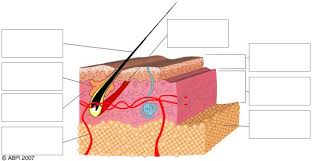The foods you really need to stay you healthy and strong
By Colette Bouchez
WebMD Feature
Reviewed by Louise Chang, MD
From the food pyramid to the Internet to your local bookstore, there is certainly no shortage of advice on nutrition and healthy eating. But with all the media hype surrounding many “health foods,” it can be hard for a woman to tell the nutrients from advertising ploys.
“We are sometimes led to believe that a specific food is healthier than it really is,” says nutritionist Elizabeth Somer, MS, RD, author of Age-proof Your Body. “Or that you need some exotic or expensive form of certain nutrients to gain benefits -- and most of the time that’s not true.”
Moreover -- as happened in the '90s when low fat cookies made everyone temporarily forget about calories -- Somer says some of today’s advertising sways us toward one healthy aspect of a food to keep us from noticing other, less healthy attributes. “A product may advertise itself as ‘no cholesterol’' she says, “but it still can be loaded with bad fats or tons of calories. You have to look at the total food to know for sure.”
NYU nutritionist Tara Miller, MS, RD, agrees. “You have to read the whole label, look at all the ingredients and the portion sizes, before you know for sure just how healthy a food is.”
Or you can let us do the work for you! To help you zero in on the healthiest foods that women can eat, we asked a panel of experts for their advice.
What follows is a description of the six super foods they say every woman needs. While these foods won’t cover all your nutrient bases, incorporating them into your diet as often as possible can help give you a wide range of protection.
Super foods for women: What you need
Super Food # 1: Low-fat yogurt
Goal: 3 to 5 servings a week
What it does: As a health food, yogurt is almost as old as, well, good health itself. But experts say evidence continues to accumulate that reveals its benefits in many new and exciting ways. And not just yogurt. Somer tells WebMD that any fermented dairy product -- including kefir -- contains healthy “probiotics” -- bacteria with the power to protect you in myriad ways.
“There is a suggestion [that yogurt] may decrease the risk of breast cancer,” Somer says. ”And there’s very strong evidence it can reduce problems associated with irritable bowel syndrome and inflammatory digestive tract disorders -- both conditions that impact women more than men.” Additionally, she says, yogurt can help reduce the risk of stomach ulcers and vaginal infections.
Enjoy a cup of yogurt at breakfast, lunch, or snack to help meet the U.S. Dietary Guidelines recommendation for three servings of low fat dairy each day. “It’s loaded with bone-healthy calcium -- something every woman needs more of at every age,” Somer says. One cup of yogurt has about 448 mg of calcium, compared to just 300 for eight ounces of skim milk.
The key, according to Somer, is to choose a low fat yogurt with live cultures -- like Lactobacillus acidophilus. And do check the label, Somer advises. Some store brands may not have the level of cultures found in more established brands.
Also important: Skip the fruit-on-the-bottom or other flavored varieties. “Too much sugar,” says Somer, who also reminds us that, no, those two blueberries on the bottom of the container do not constitute a serving of fruit!
Super Food # 2: Fatty fish -- like salmon, sardines, and mackerel
Goal: 2 to 3 servings every week
What it does: The healthy factor in fish is omega-3 fatty acids, and specifically two types known as DHA (docosahexaenoic acid) and EPA (eicosapentaenoic acid).
“Fatty fish not only plays a vital role in the health of the membrane of every cell in our body, it also helps protect us from a number of key health threats,” says Laurie Tansman, MS, RD, CDN, a nutritionist at Mount Sinai Medical Center in New York.
Some of those threats include heart disease, stroke, hypertension, depression, joint pain, and a number of illnesses linked to inflammation, including lupus and rheumatoid arthritis. Somer says fish may even offer some protection against Alzheimer’s disease.
While many foods -- such as walnuts, flaxseed oil, and some mayonnaise brands -- claim the benefits of omega-3 fatty acids, Somer cautions that only the DHA or EPA forms of omega-3 can be directly used by the body.
“What you get in foods like walnuts and flaxseed oil is an omega-3 acid known as ALA -- alpha-linoleic acid,” says Somer. “And while it’s certainly good for you, it requires a process in the body to convert it to DHA. And that conversion process can be influenced by a variety of individual factors.”
The good news: You are likely to see a wheelbarrow full of new products supplemented with DHA slowly making their way to market in the coming year. Currently, Kellogg is reportedly developing a cereal fortified with DHA, while a company called Nutri-Kids has already launched a DHA fortified ready-to-drink milk product. You can also find eggs fortified with DHA and, says Somer, certain brands of soymilk.
Super Food # 3: Beans
Goal: 3 to 4 servings every week
What it does: Low in fat, beans are a good source of protein and fiber and may have protective effects against heart disease and breast cancer. Beans may also play a role in stabilizing female hormones, says nutritionist Susan Krause, MS, RD.
“Beans have been around so long that most people don’t view them as a fancy new health food,” Krause says. “But in fact, they are among one of the healthiest things a woman can eat.”
In studies published in the International Journal of Cancer, researchers found that beans in general, and lentils in particular, may have some protective effects against breast cancer. In research published in the Archives of Internal Medicine, doctors found a relationship between a lower incidence of cardiovascular disease and a higher intake of legumes. Well known legumes include peas, beans, lentils, and peanuts.
As a source of both soluble and insoluble fiber, Krause says, beans can help lower cholesterol, while their level of a nutrient known as isoflavone can help in the regulation of hormones and may aid with PMS, perimenopause, or menopause symptoms. Although soybeans have among the highest levels of isoflavones, other sources include red clover, kudzu, mung beans, alfalfa sprouts, black cohosh, and chickpeas.
“Beans also contain something called protease inhibitors, which may help protect against breast cancer,” says Krause. Protease inhibitors help slow the division of cancer cells and in this way may prevent tumor formation.
Last but not least, if you are in your reproductive years, beans can give you a steady supply of folic acid -- essential if you should become pregnant.
Super Food # 4: Tomatoes (or watermelon, red grapefruit, red navel oranges)
Goal: 3 to 5 servings each week
What it does: The powerhouse nutrient in all these fruits is lycopene. And, according to Miller, while the headlines touted its protective effects against prostate cancer, more quiet research has shown it has tremendous health benefits for women as well.
“Research is starting to show that lycopene may protect against breast cancer,” Miller says. 'And it’s also a powerful antioxidant that can help a woman fight heart disease.”
The very latest research shows it may also help keep you looking younger longer by protecting against UV damage from the sun.
Super Food # 5: Vitamin D fortified low fat milk or orange juice
Goal: At least 400 IUs of vitamin D daily
What it does: “Essential to helping the bones absorb calcium from the gut,” says Somer, “vitamin D helps reduce the risk of osteoporosis and may be vital in reducing the risk of diabetes, multiple sclerosis, and tumors of the breast, colon, and ovary.”
Indeed, recent studies from the University of California San Diego suggest that vitamin D has the potential to prevent up to one–half of all breast, colon, and ovarian cancer in the United States.
Somer says that a growing body of research indicates many women may be vitamin D deficient. “A combination of staying out of the sun (which the body uses to manufacture vitamin D) and using sunscreen, which blocks the synthesis of vitamin D, has resulted in many women hitting a dangerously low level of this nutrient,” says Somer.
While Vitamin D is found in salmon, mackerel, tuna, and sardines, experts say fortified foods, such as milk, are the best source.
Super Food # 6: Berries (blueberries, strawberries, raspberries, cranberries)
Goal: 3 to 4 servings every week
What It Does: In a way similar to wine, these fruits may protect your body with powerful anti-cancer nutrients known as anthocyans, which are believed to play a role in cell repair. Krause says research shows anthocyans may decrease the risk of several cancers, including those in the breast and gastrointestinal tract.
“These berries,” says Krause, “are also high in vitamin C and folic acid, which is essential for all women in their childbearing years. And they offer powerful anti-oxidant protection, which not only protects the heart but also may protect against skin aging, from the inside out.” Moreover, she says that cranberries may help reduce the risk of urinary tract infections in women, while the nutrient, lutein found in all the berries, can help protect vision.










